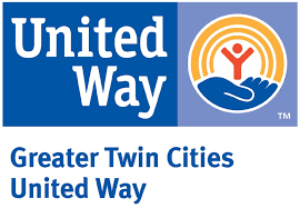Online philanthropy soared to more than $103 million in the first two weeks after the World Trade Center and Pentagon catastrophes. With approximately one out of every $2 going to the American Red Cross (ARC), the organization couldn’t electronically keep up at the Greater New York chapter. In fact, it needed an additional 35 temporary software licenses to handle the coordination.
“We were so overwhelmed by the donations that the relief response created a need to double the staff,” said Leslie Hunt, ARC New York chapter’s chief information officer. “We were used to a low volume where two direct marketing staff members could deal with the input, but we have a minimum number of licenses and this offer enabled us to get temps in to input the volume.”
Software licenses give the organization the permission to use the software and an organization usually buys a certain number of licenses to handle expected data. The chapter uses the Raiser’s Edge from Blackbaud in Charleston, S.C., and the vendor donated the additional permissions. The software automates the process of online giving so that site programming is not necessary and the donation becomes just a click away.
Besides the tremendous outpouring from major corporation Web portals that drew donations to relief organizations like the Red Cross, another $12 million has been estimated by smaller organizations, according to Ted Hart, president and CEO, of the ePhilanthropy Foundation.org in Washington, D.C.
“The tragedy has given people the reason to reach out because of the need to react quickly,” he said. “We saw corporations develop their sites and then come together including an event with the President where he mentioned a portal address to the nation.”
In most cases, the companies made space available on their sites. Large portals, such as Amazon.com, urged members to contribute. Users responded with over $6.8 million. The shoppers’ portal called eBay’s Auction for America announced it wanted to raise $100 million in 100 days. PayPal.com, which many eBay customers use for payments drew over $2 million.
Helping.org, part of the AOL Time Warner Foundation based in Dulles, Va., with links to thousands of charities, raised more than $7.5 million.
These figures all were within 14 days of the disaster, according to ePhilanthropy.
The similar approach by JustGive.org specifically allows donors to go right to the home page of organizations, such as The United Way’s September 11 Fund, the Red Cross, and the New York Fire Fighters 9-11 Disaster Relief Fund among other relief groups.
Following the growth of portal use, President Bush announced a new organization, called the American Liberty Partnership, http://www.libertyunites.org, formed by AOL, Cisco Systems Inc., Yahoo!, Amazon, eBay, and the Microsoft Corporation. The corporate involvement helps raise donations because companies are covering all of the transaction costs associated with collecting and distributing the contributions, including fees charged by the credit card companies,which are typically around 2 percent.
Yahoo! surprised ePhilanthropy with raising only $315,000 through the pay direct system from registered members, yet its average gift was more than others at $104 compared with some other portals that recorded around $40.
But Yahoo! has been a major player by donating its platform to the American Red Cross, the International Fire Fighters and several other organizations. “As much as $30 million from the libertyunites.org’s tally of $88.5 has been raised using the Yahoo! online system,” Hart said. Yahoo also has absolved all of their fees through the pay direct system and has gotten credit card companies to waive their fees as well.
AOL raised the most because they gave every customer the chance to click and give by having that gift added to their AOL bill. This added an element of speed to give the customer a chance to act quickly.
Some portals defaulted to a specific amount while AOL gave five options to donate starting at $15 and up. “All were very effective outcomes,” Hart said. “Yahoo’s highest average gift may have come from not giving a predescribed amount.”
But the biggest factor may be that success is tied to the corporation’s customer traffic. Having members on file with a credit card made it easier for AOL to quickly record donations while not all Yahoo users had a credit card on file.
Within 10 days of the event, the American Red Cross in Washington, D.C., raised $190 million and $54 million came from online donations. “The day before we raised only $1,024 in online gifts,” said spokeswoman Heather Overstreet.
With all the giving, how are online donations coordinated to make sure the dollar goes to the nonprofit intended?
A direct link is one thing from a corporate entity, but many outside organizations might claim to help relief groups. “We have five companies representing us,” Overstreet said. “If it’s not from Amazon.com., Yahoo!, AOL,Wells Fargo and Company or PayPal.com., the donor should beware.”
Vendors, like Blackbaud, provide nonprofits with a set of codes to put on a Web site that enables the organization to channel donations directly to an account. The Donor Now capability is in the software and runs through a secure server so the vendor doesn’t handle the money. Another Blackbaud product called RE:NetSolutions helps online registration along with featuring an email outreach program.
“We have processed more than $1 million online gifts with RE:NetDonors since its premier a year ago,” said Rachel Hutchisson, Blackbaud’s director of corporate communication. “But we have seen a jump in online gifts since the attack.”
One such organization is the McCormick Tribune Foundation, a Chicago-based, grant-making foundation that supports work in journalism, citizenship and education. McCormick used Blackbaud to generate $1.87 million by two weeks after the disaster and anticipated even more. Of that total, $412,000 came online from 45 to 50 different links that pointed to its donation page. The links were set up with 23 television stations and around 15 newspapers that promoted the site.
“The online tool is a one-stop-shop for us to set up the donor ability,” said David Anderson, director of development. While the online portion is small, Anderson is satisfied. The Disaster Relief Fund was established to raise money with the various Tribune Company business units and McCormick agreed to match the first $5 million donated at 50 cents on the dollar.
Even before the disaster, the AOL Time Warner Foundation’s portal of Helping.org allowed donors to give to most nonprofits throughout the country. The portal partnered with GuideStar.org by showing details about any nonprofit that has filed a Form 990 with the Internal Revenue Service. Online details help the donor see the financial information about the organization. AOL accepts the gift on behalf of the donor and forwards the funds directly to an organization called Pipeline to process credit card transactions for nonprofits. AOL maintains the security and encryption for the transactions and then sends the check to the address on file with the IRS.
As more nonprofits use software for online donations they will have to overcome certain glitches. McCormick’s initial page required a donor to fill out information with a log-in to create an account and build a history. But Anderson believed that he was looking at one-time donors so the registration was not needed.
“We wanted to do away with that step,” he said. “We corrected that by bypassing the first page but the donor still had to create an account.”
Online giving had not really taken off until the crisis, according to Blackbaud’s Hutchisson. “We think it’s an important part of where the future is headed especially when we see an example of one organization bringing in $100,000 over one weekend,” she said.
“Donors have gotten over the obstacles to using the Net,” Hart said. “People have turned to the Net in unprecedented numbers.”
Richard Williamson is a Dallas, Texas-based reporter for the Denver News Bureau.












